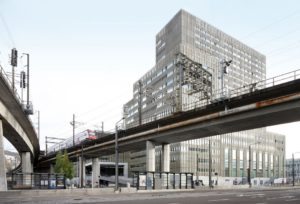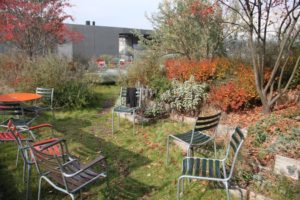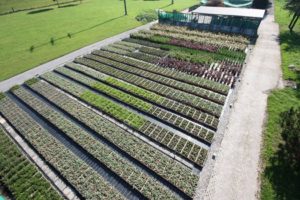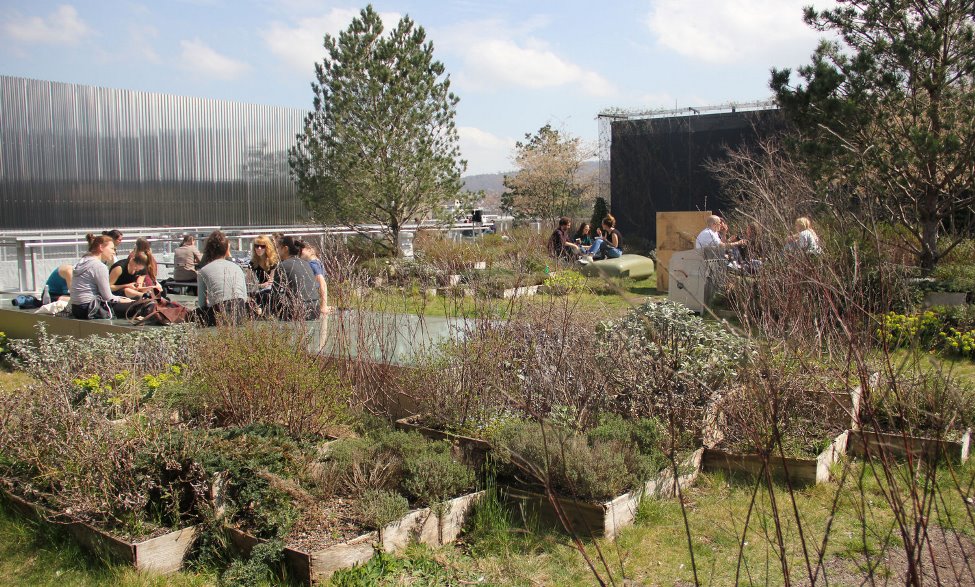When one thinks of restoring watershed, rivers and estuaries, what normally comes to mind are projects taking place on the waterfront on in the water itself.
The former might include replanting riparian vegetation or renovating obsolete stormwater and sewage systems to eliminate CSO (combined sewage overflow). The latter might include dredging contaminated sediments or restoring oyster reefs.
 But move away from the body of water a bit further—into the heart of a city—and one finds other elements of watershed restoration that might not be so obvious: bioswales, permeable paving, and green roofs.
But move away from the body of water a bit further—into the heart of a city—and one finds other elements of watershed restoration that might not be so obvious: bioswales, permeable paving, and green roofs.
One of the finest new examples of a green roof can now by found in downtown Zurich, Switzerland, 90 feet above street level on top of the new University of the Arts.
Even better, from a Restoration Economy standpoint—is that contruction of the new university building remediated and repurposed the site of the old Toni factory.
 Designed by Studio Vulkan Landscape Architecture, this gorgeous new outdoor space creates a green oasis for students in an area where there has been a surge of new high-rises, technical buildings, chimneys, atriums and concert halls.
Designed by Studio Vulkan Landscape Architecture, this gorgeous new outdoor space creates a green oasis for students in an area where there has been a surge of new high-rises, technical buildings, chimneys, atriums and concert halls.
Here, plants grow in wooden boxes stacked to create a pixel-like rugged landscape. It is a paradoxical garden: built in no time and ready for use on the final day of construction, it hasn’t, unlike most parks, gone through a long development phase. Yet the lush garden is far from finished – its primary principle is not growth, but decay.
A 2,600 m2 urban world with the appearance and radical individuality of a small private garden. The stacked boxes were pre-cultivated over two years with a colourful mix of plants suitable for the environment, including perennials, herbs and small shrubs such as willow.
 Eventually, the boxes will decay, the plant species will mix and the pixelated landscape will grow into soft mounds, forming the roof’s base soil layer that will enable plant growth.
Eventually, the boxes will decay, the plant species will mix and the pixelated landscape will grow into soft mounds, forming the roof’s base soil layer that will enable plant growth.
This system is the result of a careful study of the location and the envisaged intense level of use from the beginning, combined with the availability of water on the roof, short construction period and architectural limits on structural height.
As a symbiosis of nature and artificiality, the rugged world of stacked pixels reflects the place and the environment. Here, the normal process of landscape architecture has been reversed, beginning at what’s normally the end: decay.

